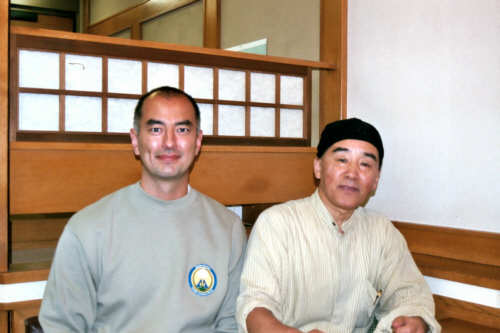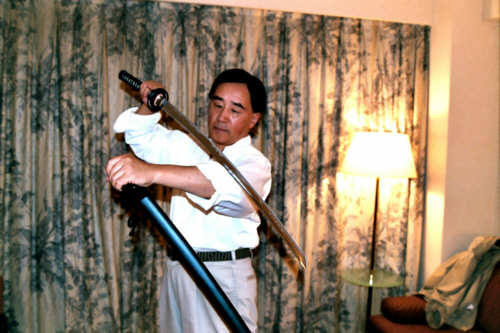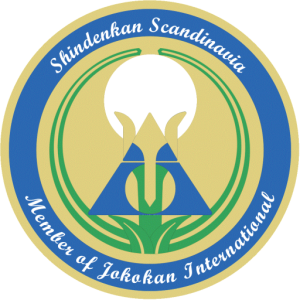
By Jokokan Honbu
40 Jokokaners had signed up for the first Yakami-ryu Kenjutsu course training camp by invitation for Jokokaners with more than three years of training experience behind them.
From a sunny morning, 40 Jokokans of both sexes, aged 11 to 55 years, and with between 3 years and 33 years of martial arts and martial arts experience behind them, each stood with their bokuto (wooden sword) and katana (steel sword) in hand and a large expectant smile on his face.
For around 70%, it was the first time they had to be taught the use of sword techniques – Yakami-ryu kenjutsu. These Jokokans belonged to the 6th kyu to 4th kyu group.
The next group was 3rd kyu – 1st dan Sr. who, with their 9 to 23 years of experience behind them, had already become quite familiar with the sword's secrets and toolbox. School The Chief Instructor group from 2nd dan to 4th dan with between 18 and 32 years of experience in the goody bag, had already been trained in Yakami-ryu kenjutsu for many years, and the last group, the Shihan group from 4th dan to 6th dan with 30 with 33 years of experience behind him, was trained in both Yakami-ryu kenjutsu and Yakami-ryu Iai-jutsu (quick draw with the sword) All groups each got their own benefit, task and goal with the course.

The teacher on the course was Yakami-ryu grandmaster and Honbu Dojo's Chief Instructor, Yamana Sensei, who has been taught by Soke Sensei Tonegawa, as well as several other famous and recognized Japanese Kenjutsu and Iai-jutsu grandmasters in Japan for many years. The weapon forms include; Kenjutsu (sword), Iai-Jutsu (quick draw with sword), Yari-Jutsu (spear), Jo (short staff), Bo (long staff) and Kotachi & tanto (short sword and knife) which all belong to Yakami-ryu ´s weapon curriculum and toolbox.
The course training camp was divided into two lessons. First training lesson consisted of kenjutsu history, Yakami-ryu Kenjutsu history, etiquette, various kamae (fighting stances), kamae tai-sabaki (foot and fighting stances in motion), as well as the old Yakami-ryu Goka no Tachi sword techniques, which are standing basic techniques on high level.
The subsequent training session, after a light lunch and coffee break, consisted of; Selected walking kihon (basic) and senkai (four directions) techniques, as well as four step kihon kumite, where the sweat really broke out on all the participants. Yakami-ryu foundation consists of 8 groups containing 18 techniques each, divided into kihon and senkai, as well as 8 groups containing 18 techniques each, divided into four-step kihon kumite (basic fighting technique).
Spirits were high and Yakami-ryu kenjutsu's first course training camp ended both with a real common samurai battle cry, as well as a resounding European "Braveheart" battle cry, so that all participants could enjoy the rest of the weekend with a well-deserved rest and recovery for their tired bodies and heads .
The satisfaction and benefits were so great that there is already a subsequent Kenjutsu training course in kihon, senkai and kihon kumite within half a year, as well as another training camp course in kumite (combat technique) in a year's time.





